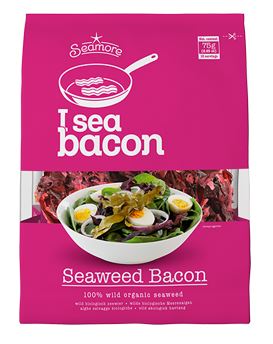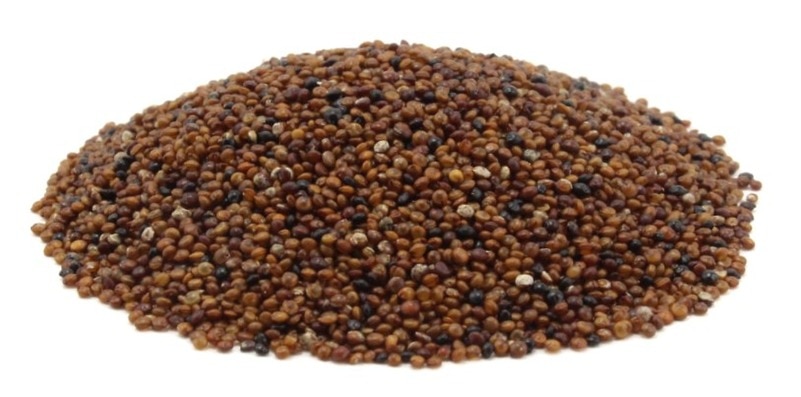
It’s an exciting time for me. Lover of the novel and unique; my news feed in January brings me joy in the form of list upon list of the new and interesting foods I can spend all year trying. So I’ve rounded up my favourites, and added a few of my own. Here’s my list of the Top 7 food trends of 2017.
Welcome to your 2017 plate…
1. Bacon flavoured seaweed
Bacon fans rejoice! Bacon is now on the
 menu in a version that’s healthier than kale.
menu in a version that’s healthier than kale.
Researchers found a strain of seaweed last year that tastes just like fried bacon, and has twice the nutrition of kale. Touted as the next superfood, the seaweed “is an excellent source of minerals, vitamins and antioxidants” (Chuck Toombs, a business researcher)
containing up to 16% protein.
I have been keeping an eye on this since I first wrote about it in August, and it’s finally available to buy! I love that it’s a different options for vegetarians, vegans and anyone cutting down on meat.
2. Yak Milk
We first saw yak butter on menus in 2015 where it was being spruiked as the high-energy  ingredient to the Bulletproof coffee. Now the milk is being made by small, artisanal farmers around Australia. As shoppers look for more choice, and farmers move toward other sources of profit, I predict a rise in popularity toward novel milks (think camel milk and reindeer milk).
ingredient to the Bulletproof coffee. Now the milk is being made by small, artisanal farmers around Australia. As shoppers look for more choice, and farmers move toward other sources of profit, I predict a rise in popularity toward novel milks (think camel milk and reindeer milk).
Is it healthy?
Yak, or buffalo milk, is higher in calcium and iron compared to cow’s milk. But on the flip side, it is higher in fat and kilojoules. As with cow’s milk, it contains amino acids and fatty acids plus is has vitamins, specific enzymes, and bacteria with probiotic activity.
3. Smurf coffee

Coloured coffees are making their way onto breakfast menus here in Sydney, with Smurf Coffee causing the most amount of excitement (at least, for me) because it’s BLUE!
The colour comes from the blue-green algae added to the latte. Algae contains over sixty vitamins, minerals, and amino acids which sounds awesome until you hear that there have been some reports of toxic contaminants in some algae supplements. So be careful about what you drink. Also, as I am yet to try this, I wonder how it might taste… when I tried an algae supplement once it was distinctly pond flavoured.
The research into the benefits of algae is quite new, so the jury is still out on the supposed health promoting effects of this.
4. Kañiwa
Much easier to pronounce than it’s distant cousin quinoa, kaniwa is a good source of protein, fibre and calcium. 
It’s actually very similar to quinoa; both are gluten-free, have a complete amino acid profile and higher in iron than other grains. The only benefit kaniwa has over quinoa is its novelty, and the fact it’s smaller and so has a shorter cooking time.
And for cooks who royally mess up with cooking quinoa (ending up with a soapy, bitter mess), try kaniwa. It isn’t coated with the bitter saponins that cause quinoa to taste strange if not prepared correctly.
5. Cricket flour
Insects have long been on the menu in some cuisines and it’s only now the rest of us are starting to see the benefits of using insects as a source of sustainable nutrition.
Keep an eye out for protein bars and baked goods made using cricket flour. It’s claimed that cricket flour is a tasty source of nutrition, packed with protein, healthy fats and micronutrients.
The selling point is that it’s a more sustainable source of nutrition than your typical protein source (think beef and so on), as it’s competitively easier and cheaper to make.
6. Teff
This grain hailing from Ethiopia lays claim to being the smallest known grain. Despite its small size, it packs a punch nutritionally.
Teff’s main selling point is its calcium content; just one cup of cooked teff offers the same amount of calcium you would find in half a cup of cooked spinach. It also contacts resistant starch, a type of fibre that helps with colon health.
7. Lotus nuts
 Sometimes I go to Chinatown and kill an hour or two walking around an Asian supermarket looking at the foods and deciding what to try. Lotus nuts were my prime discovery of 2016 and I feel everyone needs to be aware of how delicious they are.
Sometimes I go to Chinatown and kill an hour or two walking around an Asian supermarket looking at the foods and deciding what to try. Lotus nuts were my prime discovery of 2016 and I feel everyone needs to be aware of how delicious they are.
Sadly I couldn’t find too much in the way of nutrition information, but as with most plant foods they would be low in fat and a source of fibre and nutrients. Buy pre-prepared and have a handful as a snack to enjoy as I did. They are similar in texture to chickpeas, but have a nuttier, sweeter taste.
Anything I missed? What else do I need to have on my try list this year?


Oh wow, I’ll look forward to trying out some of these! Smurf coffee, wow!!!
Lennae xxx
http://www.lennaesworld.com
LikeLike